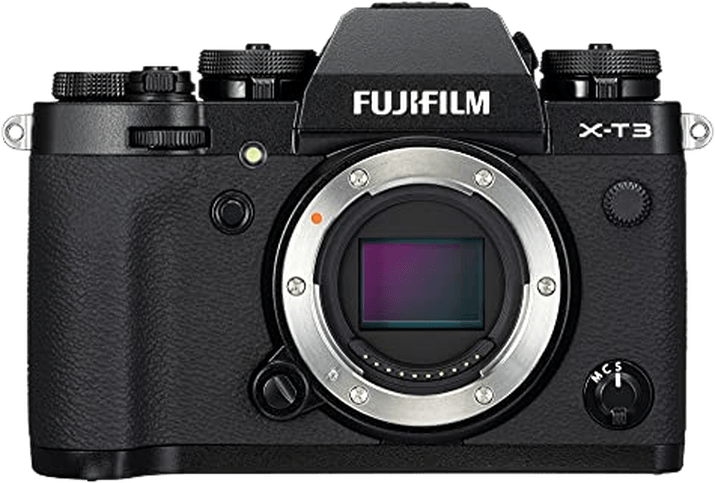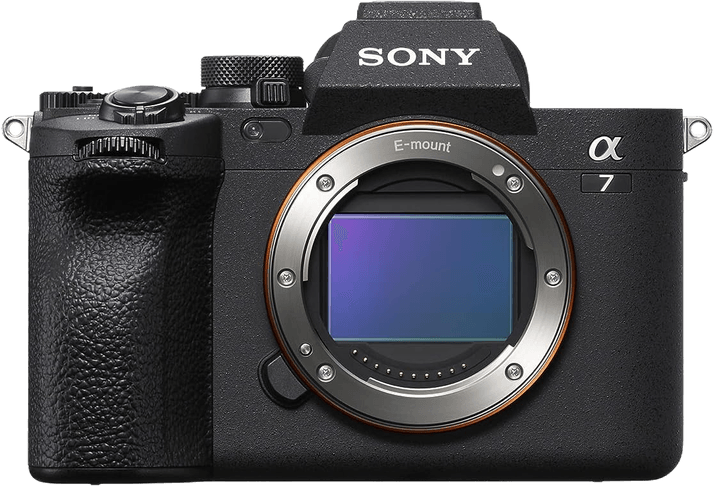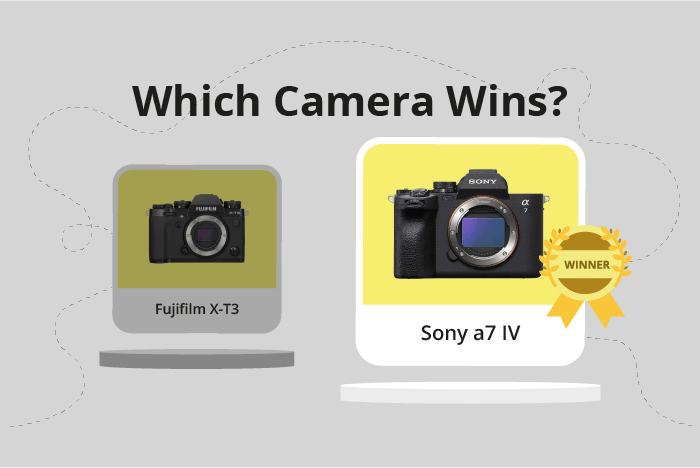Fujifilm X-T3 vs Sony a7 IV Comparison
Fujifilm X-T3

Sony a7 IV

The Sony a7 IV outperforms the Fujifilm X-T3 with a score of 84/100 compared to 72/100. Both cameras are mirrorless and share similarities in size, with the X-T3 measuring 133 x 93 x 59mm and the a7 IV at 131 x 96 x 80mm. The Sony a7 IV excels with its more recent release in 2021 and a higher launch price of $2499, indicating advanced features and technology. On the other hand, the Fujifilm X-T3, released in 2018, is lighter at 539g and more affordable with a launch price of $539.
Considering the specifications, the Sony a7 IV takes the lead with its modern technology and superior performance. However, the Fujifilm X-T3 remains a viable option for those seeking a lighter and budget-friendly alternative.
Fujifilm X-T3 vs Sony a7 IV Overview and Optics
The Sony a7 IV outperforms the Fujifilm X-T3 in optics, scoring 85/100 compared to the X-T3’s 67/100. Both cameras share common specifications, including a CMOS sensor, but the Sony a7 IV surpasses the Fujifilm X-T3 in several aspects.
The Sony a7 IV has a higher megapixel count at 33, compared to the X-T3’s 26, allowing for greater image resolution. Additionally, the a7 IV boasts a full-frame sensor, which is larger than the X-T3’s APS-C sensor, resulting in better low-light performance and dynamic range. The Sony a7 IV also has a higher DXOMARK sensor score of 97, while the Fujifilm X-T3 does not have a DXOMARK score. Furthermore, the a7 IV features image stabilisation, which the X-T3 lacks, making it easier to capture sharp images in various shooting conditions.
However, the Fujifilm X-T3 has a faster shooting speed of 20 frames per second (fps) compared to the Sony a7 IV’s 10 fps. This advantage makes the X-T3 more suitable for capturing fast-moving subjects and action photography.
Considering these factors, the Sony a7 IV is the superior camera in terms of optics, offering higher resolution, a larger sensor, and image stabilisation. The Fujifilm X-T3, on the other hand, excels in shooting speed, making it a better choice for action photography. Ultimately, the decision between these two cameras comes down to the specific needs and preferences of the photographer.
Fujifilm X-T3 vs Sony a7 IV Video Performance
The Sony a7 IV outperforms the Fujifilm X-T3 in video capabilities with a score of 91/100, compared to the X-T3’s 83/100. Both cameras share common features, such as 4K video resolution and built-in time-lapse functionality. However, the Sony a7 IV has a higher max video frame rate and slightly different max video dimensions, giving it an edge over the Fujifilm X-T3.
The Sony a7 IV’s max video frame rate is 120fps, while the Fujifilm X-T3 offers a lower frame rate of 60fps. This difference allows the Sony a7 IV to capture smoother slow-motion footage, which is an essential feature for videographers. Additionally, the Sony a7 IV has max video dimensions of 3840 x 2160, while the Fujifilm X-T3 has a slightly larger dimension of 4096 x 2160. Although the X-T3 has a larger dimension, the difference is not significant enough to impact video quality noticeably.
The Fujifilm X-T3 does not have any significant advantages over the Sony a7 IV in terms of video capabilities. Its slightly larger max video dimensions do not offer a noticeable improvement in video quality, and its lower max video frame rate is a disadvantage compared to the Sony a7 IV.
Considering the higher video score, higher max video frame rate, and similar max video dimensions, the Sony a7 IV is the superior choice for videographers. The Fujifilm X-T3 does not provide any notable advantages in video capabilities, making the Sony a7 IV the clear winner in this comparison.
Fujifilm X-T3 vs Sony a7 IV Features and Benefits
The Fujifilm X-T3 and the Sony a7 IV both have a feature score of 83/100, indicating a tie in this comparison. These cameras share several specifications, making them evenly matched in terms of features. Both have a 3-inch screen with a resolution of 1,040,000 dots, touchscreen capabilities, a flip screen, Wi-Fi, and Bluetooth connectivity. Neither camera has GPS functionality.
Despite having the same feature score, the Fujifilm X-T3 has its own strengths. It is known for its excellent image quality, color reproduction, and intuitive controls. The X-T3’s design is also highly regarded, with a retro aesthetic and robust build quality that appeals to many photographers.
On the other hand, the Sony a7 IV also has its advantages. It has a full-frame sensor, which can provide better image quality and low-light performance compared to the X-T3’s APS-C sensor. The a7 IV also benefits from Sony’s advanced autofocus system, which is known for its speed and accuracy.
Ultimately, the choice between the Fujifilm X-T3 and Sony a7 IV comes down to personal preference and specific photography needs. The X-T3 excels in color reproduction and design, while the a7 IV offers a full-frame sensor and a superior autofocus system. Both cameras are excellent choices with a high feature score, and photographers should consider their individual requirements when making a decision.
Fujifilm X-T3 vs Sony a7 IV Storage and Battery
The Sony a7 IV outperforms the Fujifilm X-T3 in storage and battery with a score of 76/100 compared to the X-T3’s 68/100. Both cameras share common specifications, including two memory card slots and USB charging capabilities.
The a7 IV has a superior battery life, offering 580 shots per charge, compared to the X-T3’s 390 shots. This difference in battery life makes the a7 IV more suitable for extended shooting sessions. Additionally, the a7 IV accepts both CFexpress Type A and SD (UHS-II compatible) memory cards, providing users with more storage options and faster write speeds.
On the other hand, the Fujifilm X-T3 accepts SD, SDHC, and SDXC memory cards, which are more widely available and affordable compared to the CFexpress Type A cards. This advantage may appeal to budget-conscious photographers.
Considering these factors, the Sony a7 IV offers better battery life and storage options, making it the superior choice in this category. However, the Fujifilm X-T3 could still be a viable option for those prioritizing affordability and accessibility of memory cards.
Fujifilm X-T3 vs Sony a7 IV – Our Verdict
Are you still undecided about which camera is right for you? Have a look at these popular comparisons that feature the Fujifilm X-T3 or the Sony a7 IV:

